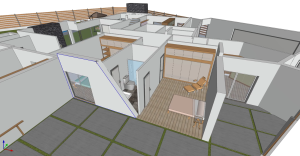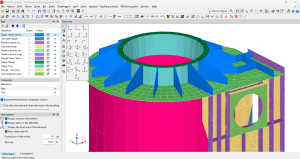Reducing CO₂ emissions linked to the construction industry is a task that cannot be delayed. This sector is responsible for almost 40% of the emissions in Europe, which has led the European Commission to set a target of halving emissions from buildings by 2030 and achieving a sustainable, carbon-neutral European Union (EU) by 2050.
Although it is true that residential buildings account for most of these emissions, other industries such as those related to tourism also generate greenhouse gases when new hotels are built or existing ones are renovated. This is why CYPE has organised "Sustainable Architecture and Bioconstruction: a practical application in a glamping module project, a cycle in which we aimed to highlight and prove that the use of sustainable materials in glamping sites, currently a very popular type of accommodation, can generate considerable savings in carbon dioxide emissions when compared to the use of conventional materials.
To do this, we simulated the construction of 40 glamping-type accommodations following three hypotheses, which we called "Conventional", " Enhanced conventional" and "Bio-construction", depending on the materials and construction systems used. This work has allowed us to confirm the existence of work sections with a greater repercussion and impact, both at an economic and environmental level, in the Life Cycle Analysis, such as structures, external walls, roofs and flooring.
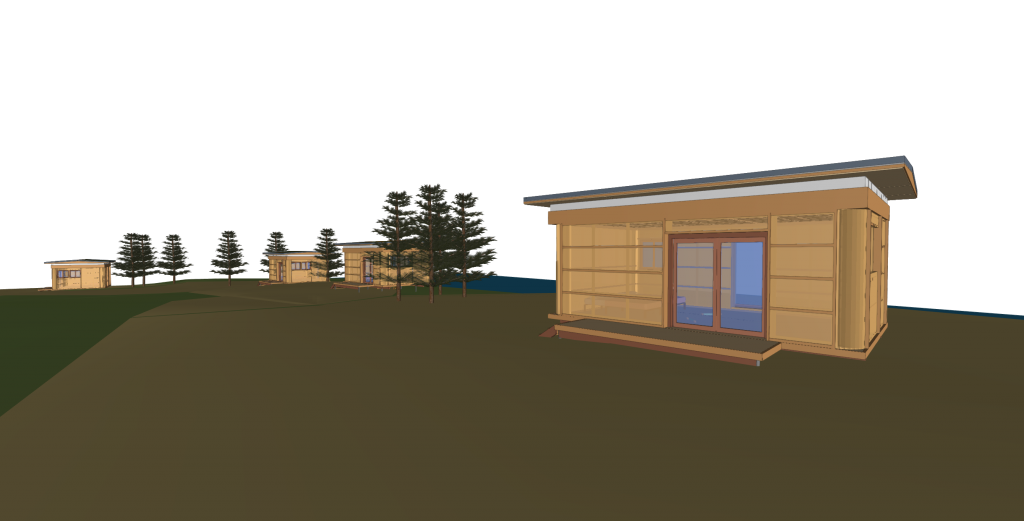
Starting with the architectural design
The extraction of the bill of quantities and the calculation of CO₂ emissions have been carried out thanks to the architectural design of a glamping site made using the CYPE Architecture application, where we have prioritised and specified in each building element the use of materials such as timber, straw bales, clay mortars, lime plaster or natural stains for timber floors as opposed to other components such as concrete, ceramic brick, aluminium, plaster or plastic paint, among others.
[table id=4 /]
Once the 3D architectural design was completed, we used Open BIM Quantities, a program that uses the geometry of the BIM model to extract the quantities and cost estimations for our glamping project thanks to a pricing library previously created with Arquimedes and the CYPE construction cost database "Generador de precios", which we then imported into Open BIM Quantities.
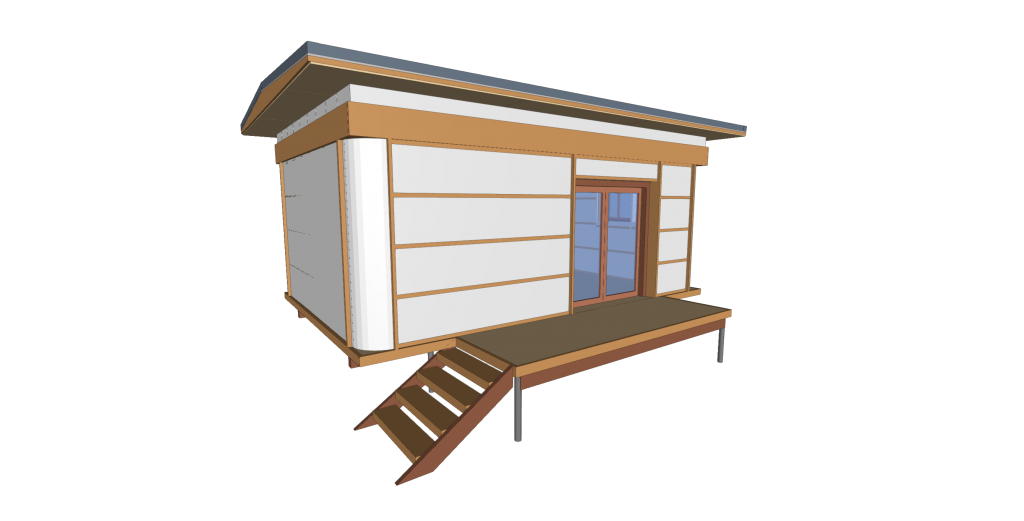
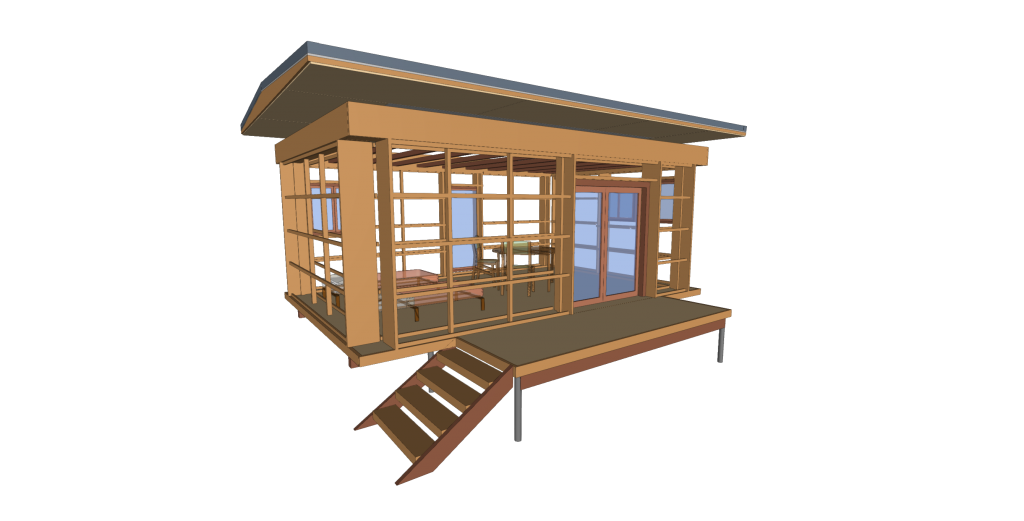
In order to establish a direct connection between the prices of the items and our project, specific information was assigned to each of the systems used in the CYPE Architecture BIM model, making it easier to connect with Open BIM Quantities for the project's bill of quantities.
This connection has been made via the creation of specific types in the BIM model and the use of labels, which have subsequently facilitated the mapping process in Open BIM Quantities and allowed a correlation to be established between each building element entered in CYPE Architecture and one or more items from the construction cost database "Generador de precios".
With the bill of quantities generated in BC3 format in Open BIM Quantities we have carried out the economic study and we have obtained the data for the life cycle analysis. This data can be processed in Arquimedes via a specific module enabled in the Spanish version of the program. Arquimedes has allowed us to extract both the bill of quantities and the global warming potential of 40 glamping accommodations identical to the one previously designed with bio-construction criteria.
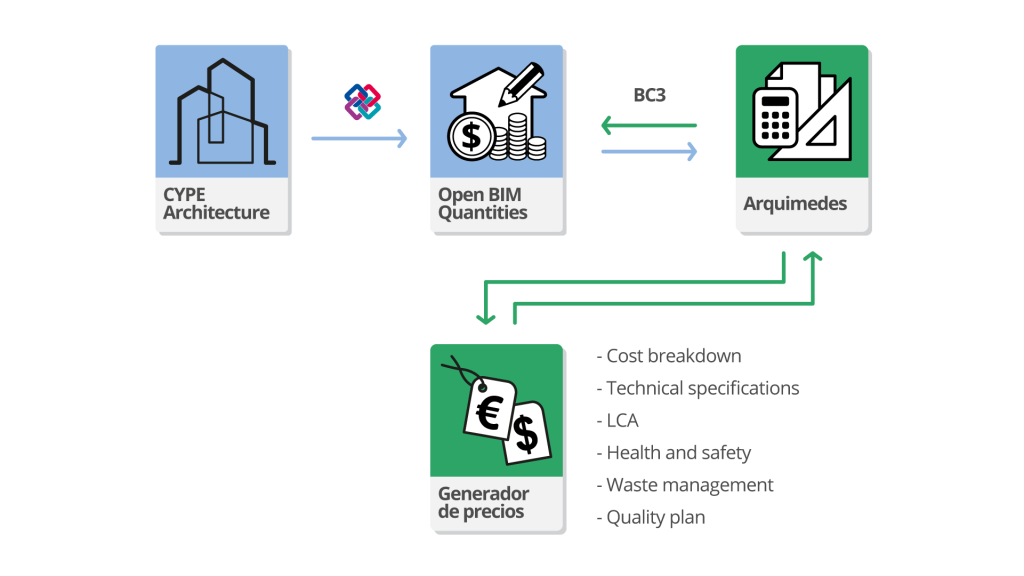
This calculation shows that we would prevent the emission of 760,157 kilograms of carbon dioxide from being released into the atmosphere compared to a conventional construction using materials such as concrete or aluminium instead of timber, or ceramic brick instead of lightweight timber and straw bale framing. In percentage terms, the use of bio-construction criteria would reduce CO₂ emissions by 117.8%.
Economic study of the project
On the other hand, the economic study of the project for the construction of 40 straw glamping sites following bio-construction criteria would be 9.4% higher than the conventional model.
The economic estimate would amount to 1.72 million euros as opposed to 1.57 million euros in the hypothesis of a project with conventional materials. However, the increase of following bio-construction criteria in this new tourist complex of 40 glamping accommodations would be 5.1% if we take into account the cost that Spain pays for CO₂ emissions.
This percentage will decrease in the coming months as the price to be paid for CO₂ emissions is continuously rising and the launch and popularisation of new bio-constructive systems will reduce the cost of their use.


